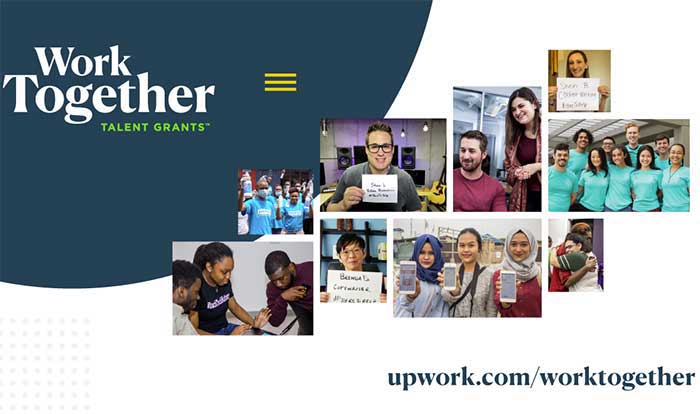Over the past decade, the world of work has undergone one of the most transformative shifts in modern history. What was once seen as a temporary solution during times of crisis has now become a permanent fixture in the professional landscape. Remote work is no longer a niche option for freelancers and digital nomads; it is a mainstream model embraced by multinational corporations, small businesses, and independent contractors alike. In 2025, this shift has solidified, bringing with it new opportunities, challenges, and most importantly, a rising demand for specific skills and services that are redefining the future of employment.
For businesses and professionals connected with CreateWork, understanding these trends is not just a matter of curiosity—it is a critical step toward staying competitive, securing better opportunities, and building sustainable careers in a world where flexibility, efficiency, and digital expertise are valued above all.
Remote workers today are not only competing within their local job markets but also against a truly global pool of talent. Whether based in New York, London, Berlin, Toronto, Sydney, or Singapore, professionals now find themselves engaging with clients and employers from every continent. This global exposure has intensified the importance of adaptability, cross-cultural collaboration, and an ever-expanding list of specialized competencies.
In this article, we will explore the trending skills and services for remote workers in 2025, the industries driving these demands, and how freelancers, startups, and enterprises can position themselves for long-term growth.
The Rising Demand for Digital and Tech-Oriented Skills
Remote work and digital skills are inseparable. As organizations continue to digitize their operations, the skills required for success have shifted toward advanced technical expertise.
Software Development and Programming
The backbone of digital transformation remains software development. Proficiency in Python, JavaScript, and TypeScript, along with frameworks like React, Angular, and Node.js, remains highly sought after. In addition, cloud-native development and knowledge of AWS, Google Cloud, and Microsoft Azure are considered essential.
With the growth of AI and machine learning, developers who can design, train, and deploy algorithms are seeing unparalleled opportunities. According to GitHub’s Octoverse Report, contributions to AI-related repositories have more than doubled in the past three years, reflecting how fast organizations are investing in these technologies.
Cybersecurity and Data Privacy
As remote work expands, so do threats to data and online security. Businesses of all sizes now prioritize cybersecurity professionals who can ensure the safety of distributed systems. Penetration testers, security analysts, and compliance officers are in demand worldwide. The introduction of stricter regulations in Europe, Asia, and North America has further increased the need for workers skilled in GDPR compliance, zero-trust architecture, and cloud security frameworks.
Artificial Intelligence and Automation
Artificial intelligence is no longer a futuristic concept; it is the engine behind many businesses. Remote professionals with expertise in natural language processing, computer vision, AI model training, and automation workflows are in short supply. For businesses, adopting AI is not only about efficiency but also about remaining relevant in highly competitive markets.
Platforms like CreateWork AI Automation provide resources for workers who want to understand how automation can reshape not just industries, but their personal careers as well.
Remote Work Skills Assessment 2025
Your Skill Development Progress
Communication, Collaboration, and Creative Services
While technical skills dominate, soft skills and creative expertise remain just as valuable. Remote work thrives on effective communication and the ability to present ideas clearly across virtual environments.
Content Creation and Digital Marketing
In 2025, content continues to rule the digital economy. Companies are looking for SEO specialists, copywriters, video producers, and social media managers who can adapt brand messages for diverse audiences worldwide. The rise of short-form video platforms like TikTok, YouTube Shorts, and Instagram Reels has fueled demand for professionals who can combine storytelling with analytics.
Professionals in this area must not only master tools like Google Analytics, SEMrush, and Ahrefs but also stay ahead of shifting algorithms. Businesses are increasingly outsourcing these services to freelancers and agencies who can deliver measurable results.
Graphic Design and UX/UI
With customer attention spans shortening, design has become an essential differentiator. UX/UI designers who can create seamless, accessible, and visually engaging digital experiences are in high demand. The integration of augmented reality (AR) and virtual reality (VR) in customer-facing platforms has opened new opportunities for creative workers skilled in 3D modeling, motion graphics, and immersive design.
For freelancers and agencies, offering bundled creative services—combining design, marketing, and copywriting—has become a competitive advantage. Platforms such as Adobe Creative Cloud and Figma remain industry standards, while AI-powered tools like Canva AI are reshaping workflows for independent creators.
Remote Work Services That Support Global Business
Virtual Assistance and Business Support
One of the fastest-growing service categories is virtual assistance. Entrepreneurs and executives worldwide now rely on assistants who can handle scheduling, email management, bookkeeping, and customer service from anywhere. The rise of AI-powered productivity tools has not replaced this demand but instead elevated the expectations for human assistants who can combine organizational skills with digital fluency.
For professionals looking to enter this field, exploring resources on CreateWork Productivity Tools offers guidance on leveraging technology to maximize efficiency.
Online Education and Upskilling Services
The global demand for continuous learning has made online education and tutoring a thriving industry. Professionals offering courses in coding, digital marketing, finance, or even wellness are experiencing rapid growth on platforms like Udemy, Coursera, and LinkedIn Learning. With businesses emphasizing continuous development, corporate upskilling services are a major market opportunity in 2025.
CreateWork Upskilling provides insights into how workers can remain competitive by constantly upgrading their skill sets.
Industry-Specific Trends Driving Remote Work
While remote work spans nearly every sector, certain industries are experiencing particularly high demand for specialized skills and services. These industries are not only hiring remote workers but also redefining how distributed teams collaborate across borders.
Finance and Fintech
The financial sector has always been technology-driven, but since 2020 the pace of digital transformation has accelerated. In 2025, fintech companies are at the forefront of this evolution, offering mobile banking, blockchain solutions, and AI-driven financial planning. Remote professionals with expertise in financial analysis, blockchain development, cryptocurrency compliance, and risk management are finding abundant opportunities.
Platforms like CreateWork Finance highlight how fintech continues to reshape global economies. Workers in this sector must be familiar with tools such as QuickBooks, SAP, and Oracle NetSuite, as well as emerging blockchain technologies that underpin decentralized finance.
Healthcare and Telemedicine
Healthcare has embraced remote work through telemedicine platforms and health-focused digital services. Professionals ranging from virtual nurses and medical coders to health data analysts and digital wellness coaches are in demand. The pandemic accelerated the adoption of remote healthcare services, and now, with advancements in wearable technology and AI diagnostics, the trend is firmly established.
The integration of remote patient monitoring (RPM) tools and AI-driven diagnostics has created roles for data scientists and IT professionals who can secure, interpret, and manage sensitive health information. Remote healthcare professionals must balance technical expertise with empathy and ethical considerations, especially in regions with strict health data regulations such as the European Union and United States.
Creative Industries and Media
The creative economy has grown substantially, powered by the explosion of streaming platforms, independent publishing, and digital content creation. Writers, video editors, podcast producers, and game developers can now reach global audiences without being tied to traditional studios or agencies.
The rise of subscription-based platforms like Patreon, Substack, and Fanhouse has given creators financial independence while fostering closer relationships with their audiences. Freelancers in this space must blend artistic creativity with business acumen to sustain growth.
For those looking to navigate this industry effectively, CreateWork Creative offers valuable resources on balancing creativity with monetization strategies.
The Importance of Soft Skills in Remote Collaboration
While technical and creative expertise are essential, the long-term success of remote professionals also depends on their ability to communicate, manage relationships, and lead across cultural and geographical boundaries.
Cross-Cultural Communication
Remote teams often span multiple countries and continents. Professionals must adapt to cultural differences, time zones, and varying communication styles. Skills in cultural intelligence (CQ), language adaptability, and diplomatic problem-solving are increasingly valuable.
Platforms like Harvard Business Review emphasize that cross-cultural competence is one of the defining traits of high-performing global leaders. Businesses hiring remote talent prioritize workers who can seamlessly collaborate with diverse teams, especially in industries like technology, finance, and international trade.
Leadership and Remote Management
Managers who can inspire, coordinate, and measure productivity in remote environments are highly sought after. Unlike traditional office settings, remote leadership requires mastering tools like Slack, Asana, Trello, and Microsoft Teams while also maintaining team cohesion.
Leadership in remote work is not only about productivity but also about mental health awareness, work-life balance, and employee engagement. Companies now value leaders who can foster trust and accountability in distributed teams, ensuring alignment despite physical separation.
Adaptability and Problem-Solving
In fast-changing environments, adaptability is a core competency. Remote professionals must embrace new technologies quickly, pivot strategies when markets shift, and respond calmly to unexpected challenges. These problem-solving skills differentiate reliable remote workers from those who struggle in nontraditional settings.
CreateWork Guide provides strategies for workers who want to refine soft skills and build resilience in a rapidly evolving remote landscape.
Freelancers as Economic Drivers
Freelancers are no longer viewed as supplemental workers; they have become economic drivers in the global economy. In 2025, freelancers represent a significant portion of the workforce in countries like the United States, United Kingdom, and Germany, as well as emerging markets in Asia and South America.
Freelance Platforms and Marketplaces
Platforms such as Upwork, Fiverr, and Toptal have expanded their reach, connecting clients with skilled professionals across fields like technology, marketing, and consulting. Meanwhile, niche platforms are emerging to serve industries such as healthcare, education, and sustainability.
Freelancers who can establish strong personal brands, maintain consistent quality, and leverage client relationships are thriving. The gig economy is no longer viewed as temporary—it is now a stable career model supported by tools for contract management, cross-border payments, and tax compliance.
Building Sustainable Independent Businesses
Many freelancers are scaling their operations into micro-agencies, hiring subcontractors, and offering bundled services to larger clients. This evolution has blurred the line between traditional employment and entrepreneurship.
Resources like CreateWork Freelancers and CreateWork Business Startup provide step-by-step insights into how independent professionals can build sustainable businesses while navigating financial planning, marketing, and scaling.
Regional Differences in Remote Work Opportunities
Remote work is global, but the skills and services in demand vary significantly by region.
United States and Canada
In North America, remote work opportunities are concentrated in technology, healthcare, education, and creative industries. Workers in these regions have access to some of the highest-paying freelance opportunities but also face intense competition.
Europe
Western Europe, particularly Germany, France, and the Netherlands, emphasizes compliance-heavy roles such as data privacy specialists, fintech analysts, and cross-border consultants. Meanwhile, Scandinavian countries like Sweden and Norway are leaders in sustainability-focused roles, creating opportunities for workers in green technology and eco-consulting.
Asia-Pacific
Countries like Singapore, Japan, South Korea, and Australia are hubs for innovation. Professionals skilled in AI development, fintech, and gaming design are in particularly high demand. Emerging markets such as Thailand and Malaysia are also becoming attractive outsourcing hubs, offering cost-competitive services while rapidly building technological capabilities.
Africa and South America
In regions like South Africa and Brazil, remote work opportunities are expanding in customer service, digital marketing, and IT outsourcing. Internet infrastructure improvements and government support programs have created a thriving environment for remote professionals.
CreateWork Employment tracks how these regional differences shape job opportunities, giving professionals insights into which markets best align with their skills.
The Future Outlook for Remote Work Skills
The future of remote work is not just about where people work, but how their skills evolve to meet the demands of a digital-first global economy. In 2025, the pace of technological change, combined with shifting economic realities, is forcing professionals to think beyond their current competencies and prepare for roles that may not have existed even five years ago.
Emerging Skills on the Horizon
Several skill categories are gaining prominence and will define the future of work:
Quantum Computing Applications: While still in its early stages, quantum computing is beginning to influence sectors like finance, logistics, and healthcare. Remote professionals with niche expertise in this area will become highly valuable.
Green Tech and Sustainability Consulting: With global commitments to net-zero targets, sustainability services are in demand. Workers who can combine environmental knowledge with business strategies will thrive, especially in regions like Europe and North America.
Metaverse and Virtual Collaboration: As platforms such as Meta’s Horizon Workrooms and Microsoft Mesh advance, the demand for skills in 3D development, AR/VR, and immersive design will continue to expand.
AI Ethics and Governance: With the widespread adoption of artificial intelligence, organizations need experts in AI ethics, compliance, and governance to ensure fair, transparent, and responsible use of emerging technologies.
For workers, staying informed about these trends through resources such as CreateWork Technology is essential to building long-term resilience.
Recommendations for Remote Workers to Stay Competitive
Remote professionals need to adopt proactive strategies to remain relevant and competitive.
Continuous Upskilling and Lifelong Learning
No skill is permanent in today’s economy. Workers must continuously invest in online education, whether through Coursera, edX, or LinkedIn Learning, or industry-specific certifications. The ability to adapt and retrain is no longer optional—it is a survival strategy.
CreateWork Upskilling emphasizes the importance of structured learning paths, allowing workers to build expertise in high-growth areas such as AI, digital marketing, and cross-border business compliance.
Building Personal Brands
Remote professionals can no longer rely solely on resumes. Instead, platforms like LinkedIn, Medium, and Behance have become showcases for expertise. A well-developed personal brand demonstrates authority, builds trust, and attracts higher-paying clients.
Freelancers who invest in consistent digital presence, thought leadership, and portfolio development will have a clear competitive advantage in crowded marketplaces.
Financial Management and Stability
Managing unpredictable income is a challenge for remote professionals. Effective strategies for budgeting, tax planning, and investment are critical. Resources like CreateWork Money provide guidance on building financial stability while navigating the complexities of freelance and global payments.
Strategies for Businesses to Leverage Global Talent
Businesses are equally responsible for shaping the future of remote work. Companies that fail to adapt to remote-first models risk losing access to the best global talent.
Hiring for Skills, Not Geography
Forward-looking companies now focus on skill-based hiring, prioritizing talent over location. Platforms like Toptal and Remote.com enable businesses to access high-level professionals regardless of geographic boundaries. This approach not only reduces costs but also ensures diversity in thought and execution.
Investing in Collaboration Infrastructure
Effective collaboration requires robust digital tools. Companies must invest in cloud infrastructure, cybersecurity, project management platforms, and real-time communication tools. Integrating AI into workflows helps reduce repetitive tasks, freeing employees to focus on high-value contributions.
Supporting Employee Wellbeing
Remote work can blur the boundaries between personal and professional life. Businesses that prioritize mental health support, flexible schedules, and inclusive policies are more likely to retain top talent. Leaders who understand cultural nuances and foster inclusion across diverse teams will build stronger, more resilient organizations.
CreateWork Business explores how organizations can evolve into remote-first enterprises without sacrificing cohesion or productivity.
Closing Thoughts: A New Era of Work
The rise of remote work represents one of the most significant shifts in the history of employment. What began as a temporary solution has now matured into a permanent and evolving reality. For professionals, the message is clear: those who embrace adaptability, invest in lifelong learning, and refine their soft and technical skills will remain at the forefront of this new global economy.
For businesses, the opportunity is equally profound. Access to global talent allows organizations to innovate faster, scale efficiently, and compete in an increasingly borderless marketplace. However, success will depend on building trust, supporting diversity, and investing in technology that enables seamless collaboration.
At CreateWork, the mission is to empower freelancers, entrepreneurs, and businesses to thrive in this rapidly changing environment. Whether through resources on remote work, guidance on business startups, or insights into the global economy, the platform provides tools and knowledge designed to help people build sustainable and meaningful careers.
The future of work is not something to fear; it is something to shape. Remote workers and businesses together have the power to design a system that is more flexible, more inclusive, and more innovative than anything that came before. In 2025, the workers who lead with vision, resilience, and expertise will not only succeed—they will define the future of work itself.




